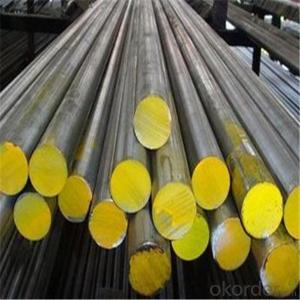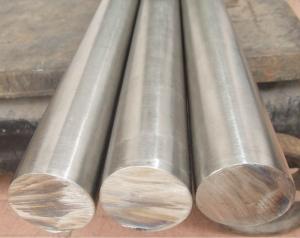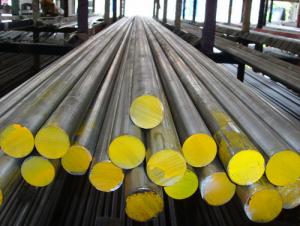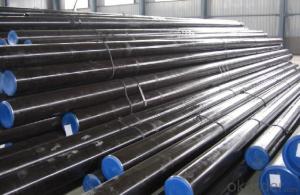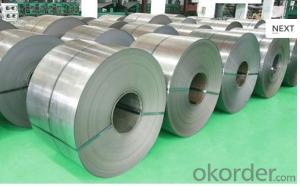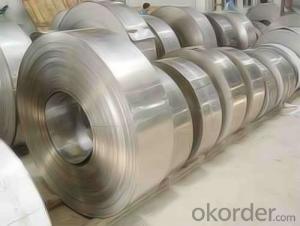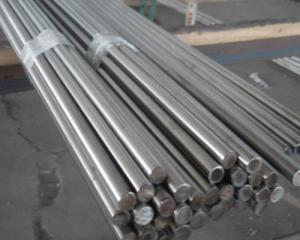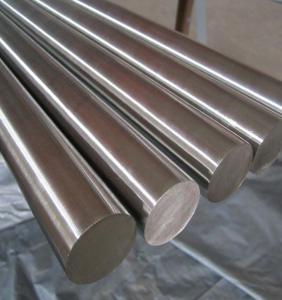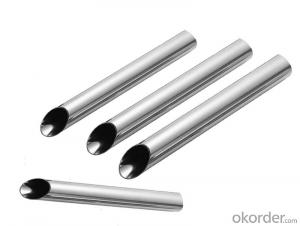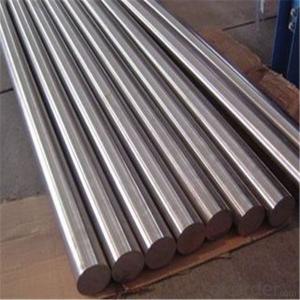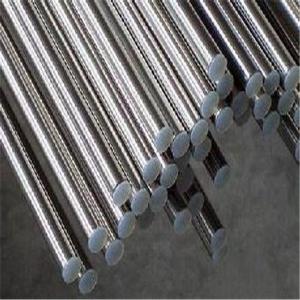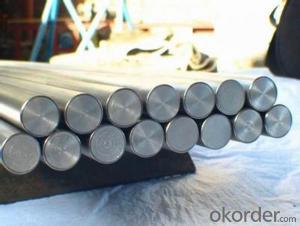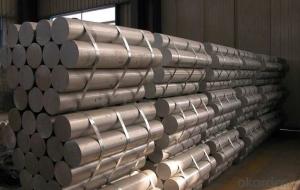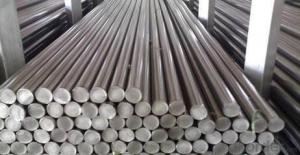Stainless Steel Rebar with competitive price
- Loading Port:
- Shanghai
- Payment Terms:
- TT OR LC
- Min Order Qty:
- 2 m.t.
- Supply Capability:
- 3000 m.t./month
OKorder Service Pledge
OKorder Financial Service
You Might Also Like
Item specifice
1, Diameter: 5.5mm-10mm stainless steel rebar
10m- 40mm stainless steel rebar
2, Length: 6m, 9m, 12m or customized
3, Standard: GB, ASTM, AISI, SAE, DIN, JIS, EN
OEM technology - send detailed technical parameters for accurate quotation.
2, Produce Process: smelt iron - EAF smelt billet - ESR smelt billet -
hot rolled or forged to get the steel round bar and plate
3, Heat Treatment: annealing, normalizing, tempering, quenching
4, Surface Treatment: Black
5, Quality Assurance: We accept third party inspection for all orders.
You can ask testing organizations such as SGS, BV, etc. to test our products before shipping.
Chemical Composition
| Grade | Technical data of the original chemical composition(%) | |||||
| Reinforcing steel bar HRB335 | C | Mn | Si | S | P | B |
| ≤0.25 | ≤1.60 | ≤0.80 | ≤0.045 | ≤0.045 | >0.0008 | |
| Physics Capability | ||||||
| Yield Strength(N/cm2) | Tensile Strength(N/cm2) | Elongation(%) | ||||
| ≥ 335 | ≥490 | ≥16 | ||||
| Reinforcing steel bar HRB400 | C | Mn | Si | S | P | B |
| ≤0.25 | ≤0.16 | ≤0.80 | ≤0.045 | ≤0.045 | 0.04-0.12 | |
| Physics Capability | ||||||
| Yield Strength(N/cm2) | Tensile Strength(N/cm2) | Elongation(%) | ||||
| ≥ 400 | ≥ 570 | ≥ 14 | ||||
PRODUCTS SHOW
F A Q
1, Your advantages?
professional products inquiry, products knowledge train (for agents), smooth goods delivery, excellent customer solution proposale
2, Test & Certificate?
SGS test is available, customer inspection before shipping is welcome, third party inspection is no problem
3, Payment Terms?
30% TT as deposit and 70% before delivery.
Irrevocable L/C at sight.
4, Trading Terms?
EXW, FOB, CIF, FFR, CNF
- Q:Can stainless steel bars be plated with gold or other metals?
- Yes, stainless steel bars can be plated with gold or other metals using a process called electroplating. Electroplating involves immersing the stainless steel bar in a solution containing gold ions or ions of the desired metal. By applying an electric current to the bar and a piece of the desired metal, the metal ions in the solution are attracted to the stainless steel surface, creating a thin layer of gold or metal coating on the bar. This process allows stainless steel bars to be transformed with a different aesthetic appearance or enhanced properties provided by the plated metal.
- Q:What is the difference between stainless steel round bars and stainless steel flat bars?
- The main difference between stainless steel round bars and stainless steel flat bars lies in their shape and dimensions. Stainless steel round bars have a cylindrical shape and are typically used for applications requiring strength and durability, such as in construction or engineering. On the other hand, stainless steel flat bars have a rectangular shape with a flat surface and are commonly used for architectural purposes, such as in building facades or decorative elements. While both types are made of stainless steel and offer corrosion resistance, their different shapes make them suitable for distinct applications.
- Q:Can stainless steel bars be used in the automotive manufacturing industry?
- The automotive manufacturing industry can utilize stainless steel bars. These bars possess desirable attributes like excellent corrosion resistance, high strength, and durability. Various automotive components can benefit from their use, including engine components, exhaust systems, suspension parts, and body panels. Given their resistance to heat and ability to withstand extreme temperatures, stainless steel bars are suitable for the automotive industry, where components may face high temperatures. Moreover, their easy machinability and formability enable customization and flexibility in design. In summary, stainless steel bars are favored in the automotive manufacturing industry due to their strength, durability, corrosion resistance, and versatility.
- Q:Are stainless steel bars suitable for nuclear power plants?
- Indeed, stainless steel bars prove to be a fitting choice for implementation within nuclear power plants. Recognized for its remarkable ability to resist corrosion, stainless steel possesses a vital attribute required in nuclear power plant settings, where exposure to elevated temperatures, pressures, and radiation may lead to corrosion. Stainless steel bars exhibit resistance against both general and localized corrosion, including stress corrosion cracking, making them an ideal option for diverse applications within nuclear power plants. These applications encompass structural components, reactor vessels, cooling systems, and fuel storage. Furthermore, stainless steel provides exceptional mechanical strength and endurance, guaranteeing the plant's integrity and safety.
- Q:What are the different types of stainless steel bar surface treatments for improved hygiene?
- There are several types of stainless steel bar surface treatments that can be used to enhance hygiene. These include electropolishing, passivation, and mechanical polishing. Electropolishing involves the use of an electric current to remove surface impurities and create a smooth, clean finish. Passivation is a chemical process that removes iron and other contaminants from the surface, preventing corrosion and promoting hygiene. Mechanical polishing involves abrasive materials to remove imperfections and create a polished surface, which is easier to clean and maintain. Overall, these treatments help to improve the hygiene of stainless steel bars by reducing the risk of bacterial growth and making them easier to clean.
- Q:What are the advantages of using stainless steel bars?
- There are several advantages to using stainless steel bars. Firstly, stainless steel bars have high corrosion resistance, making them suitable for use in harsh environments or applications where exposure to moisture or chemicals is common. Additionally, stainless steel bars have excellent strength and durability, allowing them to withstand heavy loads and extreme temperatures. Moreover, stainless steel bars are low maintenance and easy to clean, making them ideal for applications where hygiene is important, such as in the food and medical industries. Lastly, stainless steel bars have an attractive appearance and can be easily shaped and fabricated to meet specific design requirements.
- Q:What is the difference between annealed and pickled stainless steel bars?
- Annealed stainless steel bars and pickled stainless steel bars are two different types of stainless steel products that undergo different processes. Annealing is a heat treatment process that is used to soften the stainless steel and improve its machinability. During annealing, the stainless steel bars are heated to a specific temperature and then slowly cooled down, allowing the internal stresses to be relieved and the metal to become more ductile. This process also helps to refine the grain structure of the stainless steel, resulting in improved mechanical properties and better resistance to corrosion. On the other hand, pickling is a chemical process that is used to remove surface impurities and oxides from the stainless steel bars. During pickling, the stainless steel bars are immersed in an acid solution, usually a mixture of nitric and hydrofluoric acids. This acid solution dissolves the oxides and other contaminants on the surface of the stainless steel, leaving behind a clean and smooth surface. Pickling also helps to enhance the corrosion resistance of the stainless steel by removing any impurities that could potentially cause corrosion. In summary, the main difference between annealed and pickled stainless steel bars lies in the processes they undergo. Annealing is a heat treatment process that improves the mechanical properties and machinability of the stainless steel, while pickling is a chemical process that removes surface impurities and enhances corrosion resistance. Both processes are important in the production of high-quality stainless steel bars for various applications.
- Q:What are the different types of corrosion-resistant stainless steel bars?
- There are several types of corrosion-resistant stainless steel bars, including 304 stainless steel, 316 stainless steel, and duplex stainless steel.
- Q:What are the different types of stainless steel bars used in medical devices?
- Medical devices utilize various types of stainless steel bars, each possessing distinct properties and characteristics. Among the most prevalent are: 1. 316L Stainless Steel: Distinguished by its remarkable corrosion resistance and high strength, this variant of 316 grade stainless steel is frequently employed in medical devices. Its biocompatibility and resistance to pitting and crevice corrosion contribute to its widespread usage. 2. 304 Stainless Steel: Another frequently utilized stainless steel grade in medical devices, it is renowned for its versatility, favorable corrosion resistance, and ease of fabrication. Medical instruments, implants, and surgical tools often incorporate this grade. 3. 17-4 PH Stainless Steel: This stainless steel type derives its strength from precipitation hardening, which involves heat treatment. It combines high strength, commendable corrosion resistance, and favorable mechanical properties, making it suitable for orthopedic implants and structural components. 4. 420 Stainless Steel: Known for its elevated hardness and resistance to wear, this stainless steel grade is commonly employed in the production of surgical instruments, including scalpels and forceps, where sharpness and durability are vital. 5. Nitinol: While not technically stainless steel, Nitinol is a nickel-titanium alloy renowned for its distinct attributes such as shape memory and superelasticity. Its biocompatibility and ability to restore its original shape upon deformation make it a preferred material for medical devices like stents and orthodontic wires. These aforementioned examples represent merely a fraction of the stainless steel bars utilized in medical devices. The selection of an appropriate grade hinges on factors such as the specific application, desired mechanical properties, and corrosion resistance requirements.
- Q:Can stainless steel bars be used in the manufacturing of heat exchangers?
- Yes, stainless steel bars can be used in the manufacturing of heat exchangers. Stainless steel is a popular material for heat exchangers due to its high corrosion resistance, strength, and ability to withstand high temperatures. Stainless steel bars can be fabricated into various shapes and sizes, making them suitable for constructing heat exchanger components such as tubes, plates, and fins.
1. Manufacturer Overview |
|
|---|---|
| Location | |
| Year Established | |
| Annual Output Value | |
| Main Markets | |
| Company Certifications | |
2. Manufacturer Certificates |
|
|---|---|
| a) Certification Name | |
| Range | |
| Reference | |
| Validity Period | |
3. Manufacturer Capability |
|
|---|---|
| a)Trade Capacity | |
| Nearest Port | |
| Export Percentage | |
| No.of Employees in Trade Department | |
| Language Spoken: | |
| b)Factory Information | |
| Factory Size: | |
| No. of Production Lines | |
| Contract Manufacturing | |
| Product Price Range | |
Send your message to us
Stainless Steel Rebar with competitive price
- Loading Port:
- Shanghai
- Payment Terms:
- TT OR LC
- Min Order Qty:
- 2 m.t.
- Supply Capability:
- 3000 m.t./month
OKorder Service Pledge
OKorder Financial Service
Similar products
New products
Hot products
Hot Searches
Related keywords
